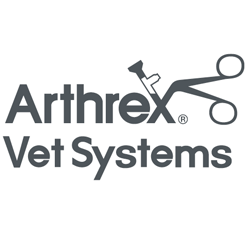Chronic Pain Assessment in Cats
Assessment by Owners
In contrast to acute pain, owner assessment of behavior has a central role in the detection and monitoring of chronic pain in cats. The majority of the standardized clinical metrology instruments in use have been developed for owners to complete. Pain caused by degenerative joint disease is the most common form of chronic pain in cats, and this area has received the most research for instrument development and validation. These instruments ask owners to rate their cat’s ability to perform behaviors known to be affected by chronic musculoskeletal pain. They are simple to use and have good reproducibility and generate a score that can be tracked over time. However, a gap exists between owner awareness of the disease process and recognition of behavioral changes in their cat.12 Because these changes develop gradually over time, owners who are not actively monitoring for these signs may miss them initially. Owner education and engagement will increase the detection of chronic musculoskeletal pain in cats.12
Clinical metrology instruments in regular use can be divided into those used for screening, diagnosis, and monitoring of disease. For screening, a checklist of six behaviors has been developed to help identify cats likely to have chronic musculoskeletal pain.12 For these six behaviors (running, jumping up, jumping down, going up stairs, going down stairs, and chasing objects), owners are asked if their cat is able to perform them normally or not, with negative responses triggering further evaluation. Several tools have been developed for diagnosis and monitoring, with most support for the Feline Musculoskeletal Pain Index13–15 and Montreal Cat Arthritis Test (both for diagnosis and monitoring)16 and Client-Specific Outcome Measures (monitoring only).17,18 The first two instruments are general questionnaires with standardized behaviors. Owners either rate (using a Likert scale) or indicate “yes” or “no” for a series of behaviors impacted by chronic musculoskeletal pain. The Client-Specific Outcomes Measures instrument is tailored to activities that are impaired in an individual cat. Although these can be highly salient for cat owners, the selection of appropriate activities and setup for the instrument can be time consuming.
Owners may also provide videos of their cats performing specific behaviors in the home.
This is relatively convenient but requires some client training to capture the whole cat in the frame, the whole behavior sequence, and adequate lighting to make evaluation possible. The six behaviors described above can be documented using video. When done well, video of cat behavior can offer an opportunity to evaluate behaviors rarely seen during the clinical assessment.
Clinician Assessment of Pain in Cats
Evaluation of cats in the clinic for chronic pain can be difficult owing to changes in behavior that result from the visit itself; clinical assessment will be affected by the cat’s level of stress. Observation of the cat’s smoothness of movement, hair coat, and posture prior to the hands-on exam can offer important insight into overall comfort. Although a few cats may be convinced to jump up onto a bench or chair, most can be observed jumping down. Offering the cat their carrier from across the room can also provide an opportunity to watch them as they walk toward the carrier.
During the hands-on exam, cats are evaluated for changes in their behavior when an area is palpated or a joint is flexed and extended. Signs include tensing of the area, a change in vocalization (increased or decreased), or an attempt to move away. Imaging of an area where pain is found is important to identify pathology, but it should not substitute for (or replace the findings of) the physical examination. For example, cats with OA may have painful joints with normal imaging or nonpainful joints with highly abnormal imaging.19 When evaluating pain, it is important to prioritize the cat’s behavior over the radiographic findings.
Chronic Pain Assessment in Research Settings
Additional tools used in a research setting include wearable activity monitors, weight distribution platforms, pressure walkways, force plates, and kinematic analysis. Activity monitors are often used as objective measures when evaluating therapeutics, but interpretation of findings has been hampered by a lack of understanding of what normal activity in cats is and how to analyze large volumes of highfrequency longitudinal data.







